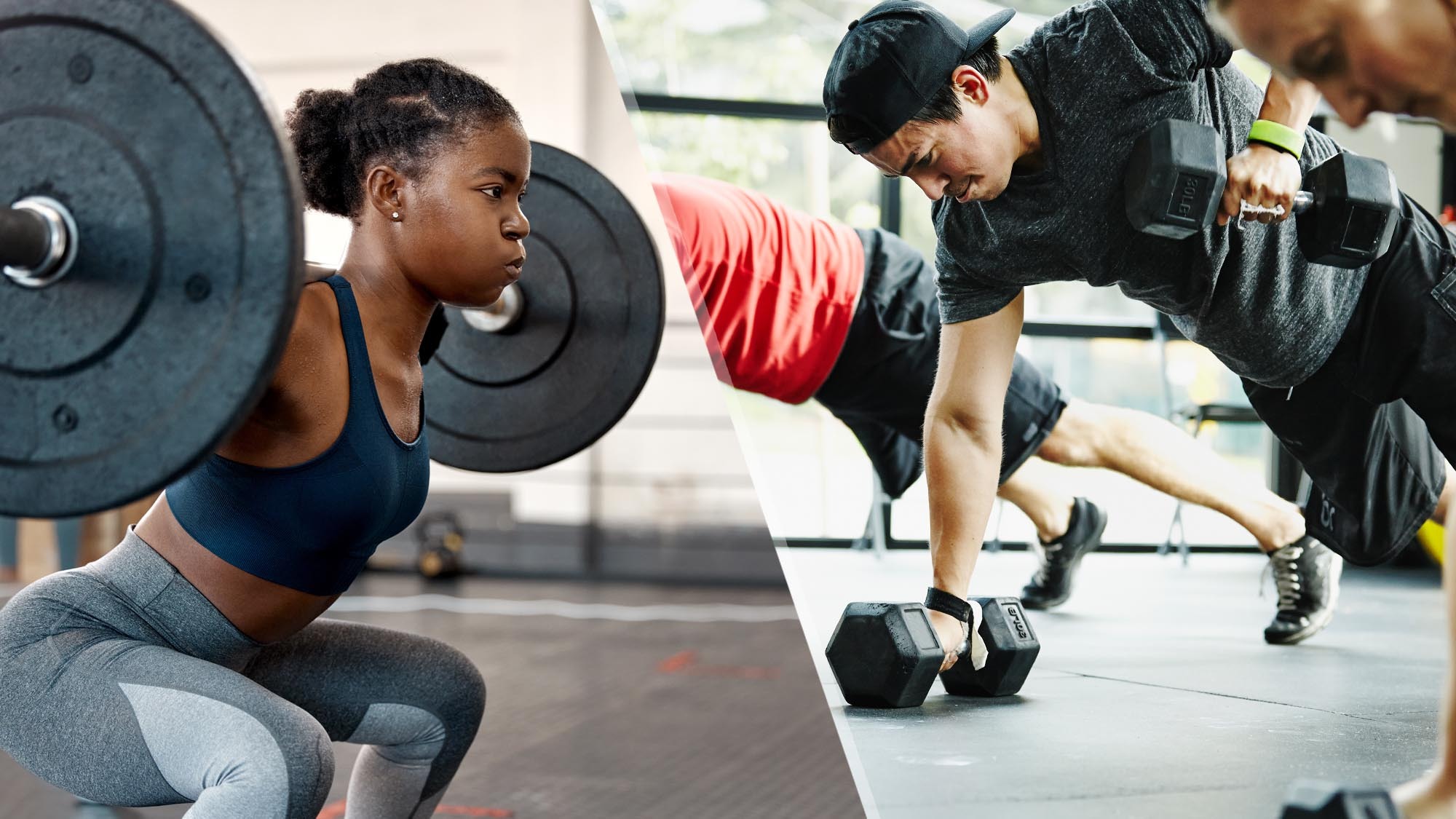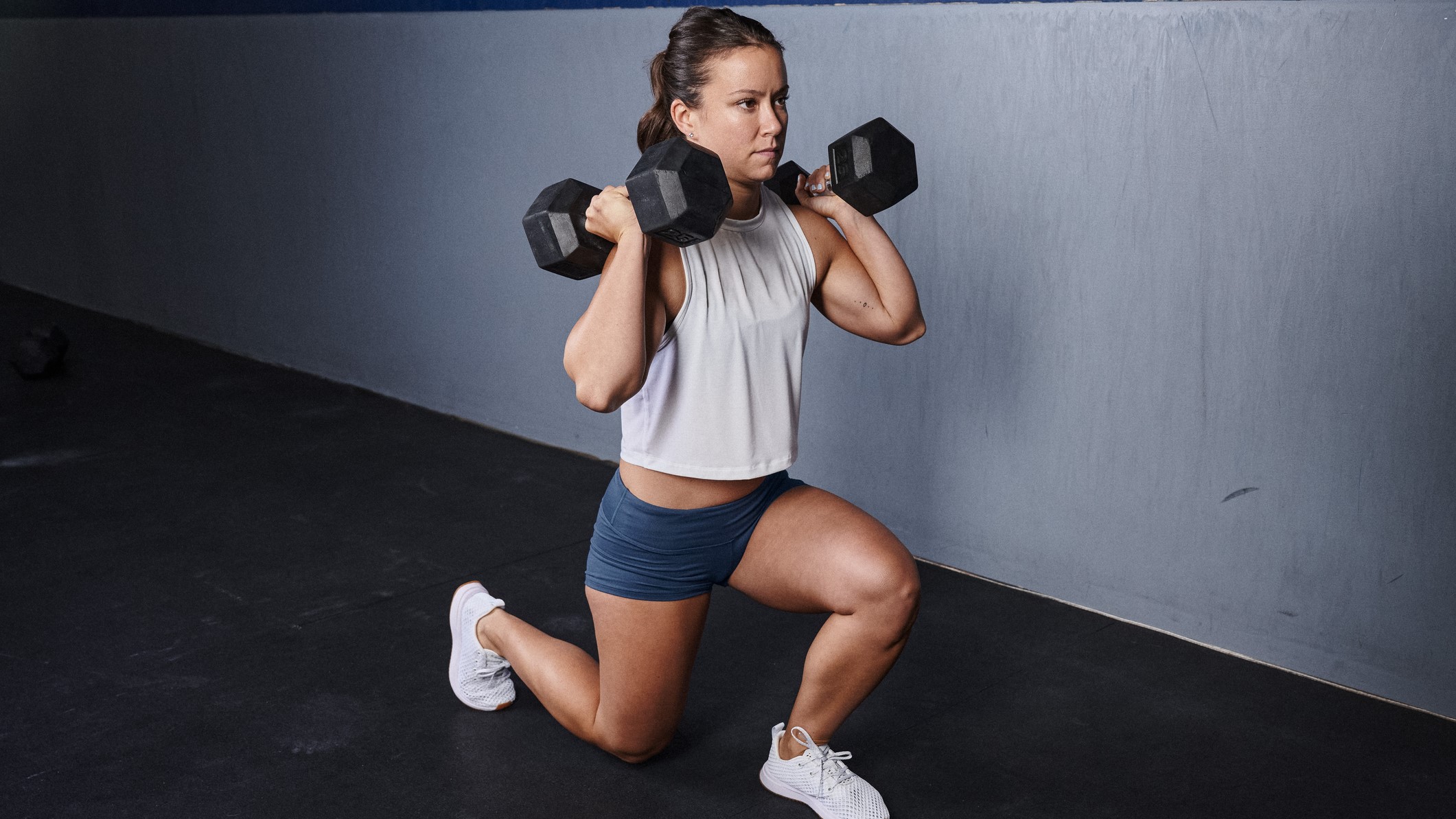
Barbells vs dumbbells — ah, the debate that keeps rumbling on. If you’ve found yourself Googling it to discover which is superior for muscle-building abilities, we’re here with some answers.
Before we continue, barbells and dumbbells are brilliant tools for building strength and muscle mass, burning calories, improving cardio fitness, and developing coordination and balance. Both are used during strength programs, cardio workouts, or strength and conditioning regimes, and you can lift heavy using either. But there are pros and cons to consider if your fitness goal is to build muscle and strength.
We decided to look at the barbell benefits, dumbbell benefits, and the cons of both to decide altogether which is better for building strength and muscle. Grab some of the best adjustable dumbbells and best fitness trackers to track your workouts and read on for our verdict.
Barbells vs dumbbells: barbell pros and cons
If your goal is to develop strength, barbells allow you to lift much heavier than using dumbbells. Of course, you can find plenty of heavy dumbbells, but the amount of grip and forearm strength required could limit your ability to lift them, especially if your goal is to hit a new one rep max on your deadlift (here’s how to deadlift properly).
You can rack the bar onto a squat rack in any position you need for exercises like a bench press or squat and securely add as many plates as you need. But with dumbbells, there’s nowhere to rack your weights, so you’ll need to lift them from the ground up. That might be less of an issue for an exercise like deadlifts but more problematic for overhead presses, when you’ll need to clean your weights to shoulder height first (we cover clean and presses here).
If you want to develop technical skills and strength, lift heavier or practice CrossFit, barbell training should form part of your exercise regime.
The downside of barbells is that they could create muscular imbalances — something I’ve seen happens over time in classes like CrossFit or F45. Where possible, I try to program my clients using dumbbells for this reason until we need to work at a much heavier weight or develop a particular technique.
While lifting barbells, your stronger side (come on, we all have one) tends to step in and pick up the slack to help you lift the weight. Consider a barbell bench press — if you’re struggling to perform the move at 20kg, your stronger side will likely drive the movement, which could trick you into attempting heavier than your muscles are ready for. When using dumbbells, your weaker side has nowhere to hide — lift the weight or fail the lift.
Another problem with barbells is limited range of motion. The bar could be restrictive, which means following very specific movement patterns. It's great for developing good form for functional training and compound movements like a squat, clean, or press but gives you less freedom overall. A lack of range of motion could also lead to injury if the muscles are restricted or unengaged during a more technical move.
That said, working with a barbell will help you develop technical skills on the bar, like cleans and snatches found in Olympic weightlifting, which is why classes like CrossFit and powerlifting are so popular. If you want to develop technical skills and strength, lift heavier, or practice CrossFit or Olympic lifting ability, barbell training should form part of your exercise regime.
Barbells vs dumbbells: dumbbell pros and cons

The benefits of dumbbell training are endless. Unlike barbells, dumbbell training helps to work muscles more evenly without your stronger side taking over. Free weights also allow you to work unilaterally (single-sided), which helps to develop strength, balance, and coordination, specifically in weaker areas that need your focus.
Dumbbell training helps to work muscles more evenly without your stronger side taking over.
Another tick for dumbbells is improved range of motion. Free weights provide more freedom in your movement patterns, helping you to develop functional, natural movement under load without the restriction of a bar — think a farmer’s walk, alternating exercises, or isolation moves like a single-arm bicep curl. In turn, it could help you avoid injury by improving the quality of your daily movement and preventing overuse.
Unilateral training indirectly stimulates muscles on the other side of your body, a process called cross-education. According to research, unilateral training could strengthen underused muscles (mostly your stabilizing muscles) and improve balance, coordination, and stability. For example, loading a dumbbell onto one shoulder during lunges will train your body to balance better and requires plenty of core strength to drive movement.
Barbells vs dumbbells: which is better at building strength and muscle?
Dumbbells are a great investment for beginners new to weightlifting or those building a home gym for home workouts in a small space. Either way, both methods allow you to work multiple muscle groups and joints, improving overall muscle mass, strength, and power.
Barbells allow you to adopt progressive overload (the process of building strength and muscle) to a higher level by incrementally adding plates as your body adapts. This is crucial for challenging your muscles to grow and strengthen, all without reinvesting in new dumbbells as you progress. Therefore, barbells can produce the most muscle hypertrophy simply because you can lift heavier and heavier…and heavier.
Because dumbbell training provides better range of motion, you could target more muscle fibers through a fuller range of motion, encouraging more effective strength gains after recovery and repair. If you notice a significant difference in ability on one side versus another — perhaps your left leg is performing better than your right — work with dumbbells at the ability level of your weaker leg and gradually increase the weight until things even up a bit. Dumbbells are also trickier to hold, helping develop overall grip and forearm strength.
Dumbbell workouts and barbell exercises we swear by
If you’re new to barbell or dumbbell exercises, these are the core 5 dumbbell exercises and core 5 barbell exercises I swear by for building strength and muscle mass. Each focuses on the big lifts you’ll find in most training programs to target your major muscle groups.
Bottom line
The barbell is technically better for strength and muscle gains, especially for those trying to develop power (powerlifters and runners, for example) and employ strength training (lifting heavier weights for lower reps) at a higher level, especially for athletes. This allows you to activate fast-twitch muscle fibers responsible for driving explosive, high-intensity movement found in heavy weightlifting.
You can still build muscle and strength using dumbbells, especially if you’re just starting, returning from injury, or training for strength maintenance. But I strongly recommend adding both to your exercise regime for variety.
More from Tom’s Guide
- Yoga vs Pilates: which burns more calories?
- Does jumping rope burn more calories than running?
- This dumbbell workout builds your entire body in just 20 minutes.
Sign up to get the BEST of Tom's Guide direct to your inbox.
Get instant access to breaking news, the hottest reviews, great deals and helpful tips.

Sam Hopes is a level 3 qualified trainer, level 2 reiki practitioner and senior fitness writer at Tom's Guide. She is also currently undertaking her Yoga For Athletes training course. Sam has written for various fitness brands and websites over the years and has experience across brands at Future such as Live Science, Fit&Well, Coach, and T3.
Having worked with fitness studios like F45 and Virgin Active, Sam now primarily teaches outdoor bootcamps, bodyweight, calisthenics and kettlebells. She also coaches mobility and stretching-focused classes several times a week and believes that true strength comes from a holistic approach to training your body.
Sam has completed two mixed doubles Hyrox competitions in London and the Netherlands and finished her first doubles attempt in 1:11.

